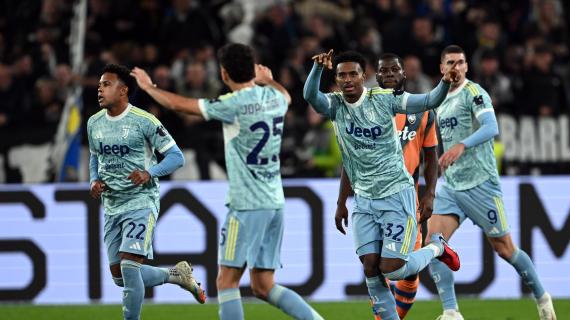
Juventus, a name steeped in footballing lore, frequently captivates fans with their uncanny ability to snatch victory from the jaws of defeat. This characteristic «never-say-die» attitude is undeniably commendable, a hallmark of champions forged in the crucible of top-tier football. Yet, beneath the surface of these dramatic comebacks often lies a recurring tactical narrative: the Old Lady frequently finds herself chasing the game, a position that, while showcasing immense character, might also indicate a deeper underlying issue in strategic consistency.
Recent observations from prominent sports analysts have highlighted this intriguing duality. While Juventus`s spirit is certainly beyond reproach – having staged impressive recoveries against formidable opponents – the consistent pattern of conceding the first goal cannot be overlooked. Is it simply a penchant for drama, or a tactical predisposition that places the team in unnecessarily perilous situations? This leads us to a critical area of discourse: the strategic deployment of the central striker.
The Striker`s Solitude: A Case for Consistency
The role of the central attacker is arguably one of the most demanding and, paradoxically, one that often requires the most stability. A striker thrives on rhythm, understanding the nuanced runs of their wingers, the precise timing of midfield passes, and the subtle defensive gaps to exploit. When this pivotal role becomes a revolving door, the intricate web of attacking movements can fray.
«Constantly changing the central striker benefits neither the player nor their teammates. A striker needs trust, a consistent run of games, to truly embed themselves in the team`s attacking machinery and develop that crucial understanding.»
This sentiment, echoed by seasoned football pundits, underscores a crucial point: tactical fluidity is one thing, but a lack of a consistent reference point upfront can severely hamper a team`s offensive efficiency. For a striker, confidence is a fragile commodity, built through consistent playing time and the tangible success of goals or crucial contributions. When a player knows their starting spot is precarious, the pressure to perform in limited minutes can become counterproductive, hindering natural play and decision-making. It`s a bit like asking a jazz musician to improvise with a new band every night; the individual talent might be there, but the seamless harmony often takes time to build.
The Managerial Conundrum: Rotation vs. Cohesion
Coaches, of course, face an unenviable task. They must balance player fitness, manage varying forms, adapt to opponent strategies, and foster internal competition within a high-stakes environment. The decision to rotate a central striker is rarely arbitrary; it stems from a complex calculation of these factors. However, the question remains: at what point does strategic rotation, no matter how well-intentioned, impede the development of vital on-field chemistry?
In an ideal world, a squad boasts multiple attackers capable of performing at the highest level, making rotation appear seamless. Yet, football is not always ideal. True attacking cohesion often comes from shared experiences, from understanding a teammate`s tendencies almost instinctively. This level of synergy takes time and consistent collaboration to cultivate. When a different player leads the line each week, the supporting cast – the wingers, attacking midfielders – must constantly readjust their own play, potentially diluting the overall attacking threat. The tactical board might show endless possibilities, but the pitch often demands familiar patterns.
Beyond the Goals: The Ripple Effect
The impact of striker rotation extends beyond just goal tallies. It affects link-up play, pressing schemes, and even defensive transitions. A consistent frontman often acts as the focal point for both offensive build-up and the initial defensive press. When this anchor point shifts frequently, the entire team`s shape and rhythm can be disturbed, creating minor hesitations that elite opponents are quick to exploit. The admirable character Juventus displays in overturning deficits might, ironically, be frequently tested precisely because tactical stability upfront sometimes takes a backseat to other considerations.
Ultimately, while Juventus`s fighting spirit is a badge of honor, the debate surrounding striker rotation highlights a broader tactical tightrope that all top clubs must navigate. The challenge for managers is to find that elusive sweet spot: enough flexibility to adapt and manage a demanding schedule, yet sufficient consistency to allow key attacking relationships to blossom. For a team like Juventus, aiming for sustained dominance rather than merely thrilling comebacks, resolving this tactical conundrum might be the key to unlocking their full, formidable potential.

